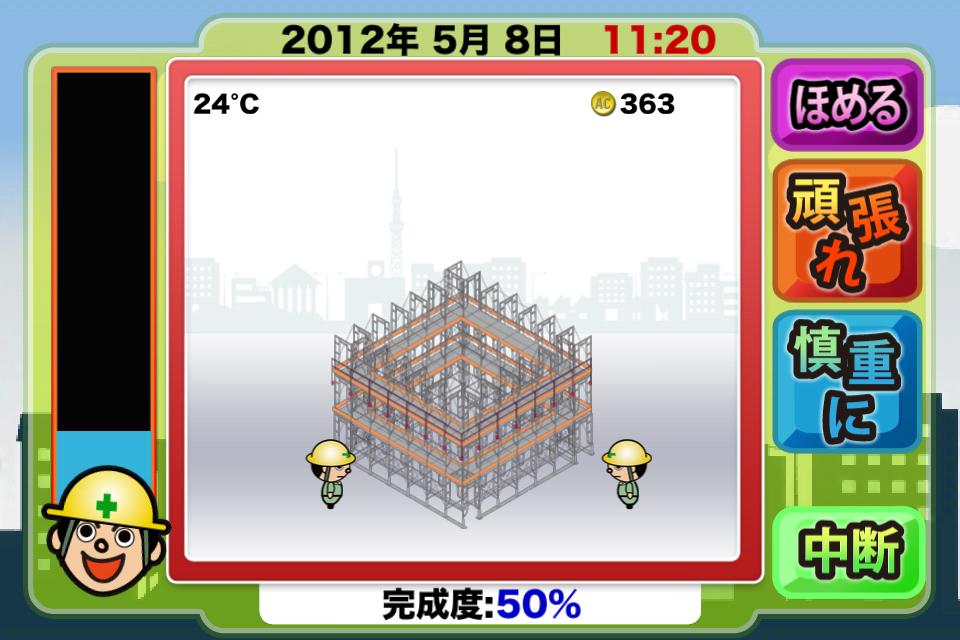Have YOU ever wanted to experience the exciting world of scaffolding? CLIMB to the highest heights! SEE the world from high above! Be on TOP OF THE WORLD!
In 2012, you had the chance to do just that in Scaffolding Tycoon, available on the iPhone and Android personal entertainment systems.
Digital Mandalas
The sad thing about developing mobile games is a lot of times they are like sand mandalas. Not that they are broken to symbolize the impermanence of life, just that they go away. The client will release it, and if it doesn’t sell, they’ll blame the devs for everything and shut down the app.
I’ve had a 17-year run making lots and lots of mandalas, and here’s one that I’m proud of, because it’s so damned quirky.
Scaffolding: There’s an Association for That

I was contacted by a group called the “Alliance Cooperation of Construction Equipment & Scaffolding for Safety” (whew!), or ACCESS for short. This is an alliance of companies that make and build the scaffolding used to make buildings.
At the time, my extent of scaffolding knowledge was that a) I’d seen it before, and b) I’d seen those awful scaffolding matches they used to do in pro wrestling until everyone got injured doing them and they stopped.
ACCESS came to me with an interesting proposition. They wanted to make a simulation game that lets players be the president of a scaffolding company. The goal was to attract young people to the exciting world of scaffolding, while also teaching about safety. This sort of unique concept is exactly what makes my bacon sizzle, so I jumped at the chance.
Scaffolding: The Game?
I had never made a simulation game before, but happened to be playing the great Game Dev Story around that time, and knew the simple mechanics and isometric look was a better fit for this project then, say, trying to recreate Civilization with scaffolding.
But that leads to the core problem — there’s not really a whole lot to the world of scaffolding. A scaffolding company gets hired by a construction company, they build the scaffolding in about a day (for a smaller building or house), then tear it all down when the building is done.
I talked with ACCESS several times, trying to find out what interesting challenges they faced in their industry, and there wasn’t much (aside from safety, which we’ll get to). That said, we had enough to make a decent game loop, which I humbly present to you now.
Scaffolding: The Game Loop
The Best Part of Waking Up…
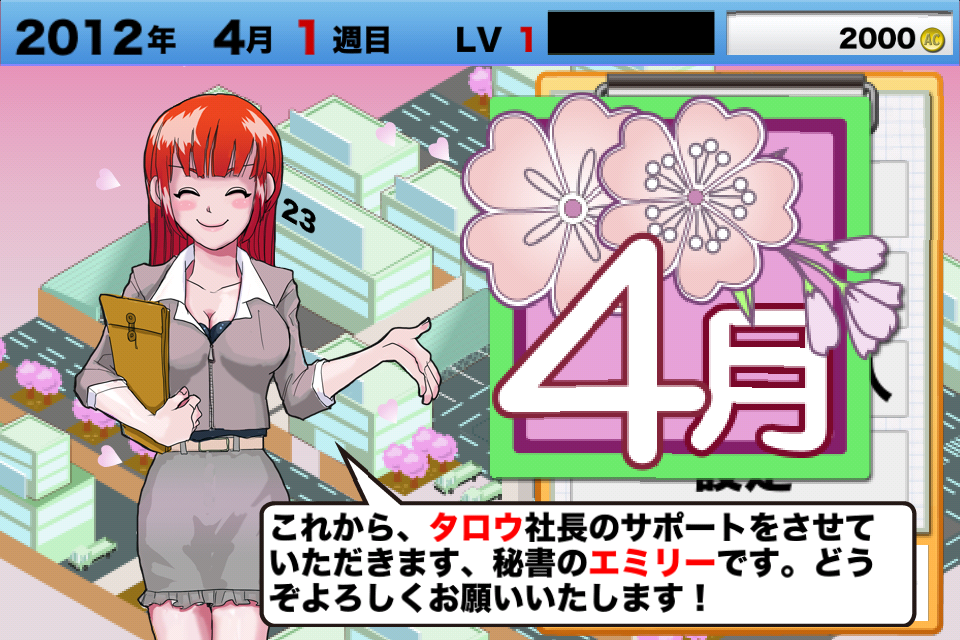

You start each day with your secretary Emily, who gives you a cheery greeting while reminding you of the date. The date is important, as you have one in-game year to complete everything.
The game’s art was done by Maki Kaneko, who is another former SEGA person, and we worked together on several projects in our post-SEGA days. When we discussed the secretary character, we thought that in the male-dominated world of scaffolding, the players would want a secretary that hearkened back to the classic “OLs” (office ladies) of the ’80s and ’90s.
It was not my idea to give Emily that low-cut top, I swear.
High Powered Negotiations
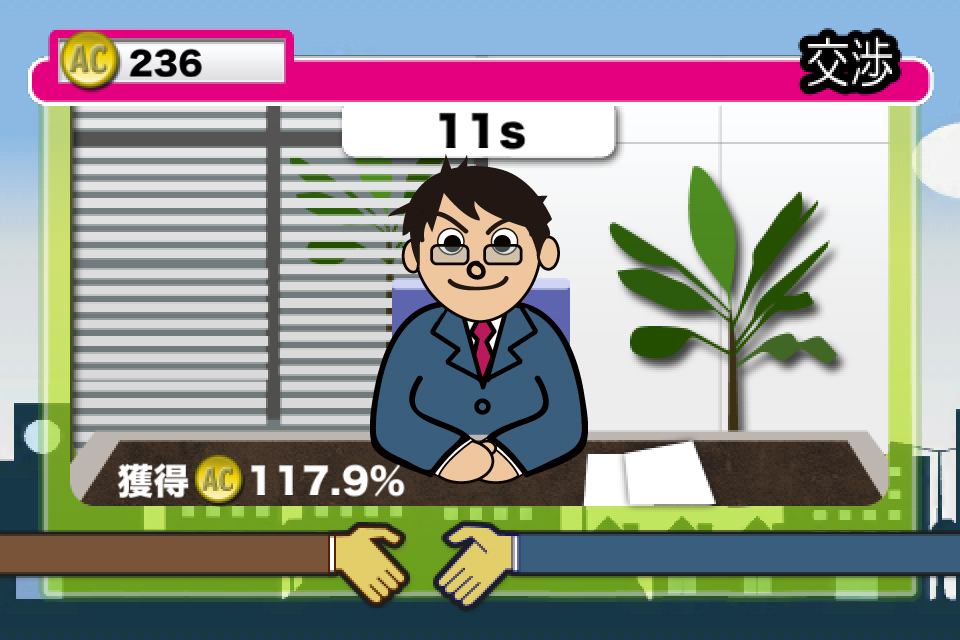
After your time with Emily, a few cups of coffee and cigarettes (not included in the game), you are presented with a job list, as well as the manpower and supply requirements. After choosing a job, you enter the negotiation phase, where you try to draw out as many extra AC (ACCESS Coins) as possible from the head of the construction company. This involves pressing and holding the screen to extend and retract your arm, with the goal of luring the opposing arm to your side in order to get more ducats. Stretch back too far though, and the deal is off.
The Right Tool for the Job
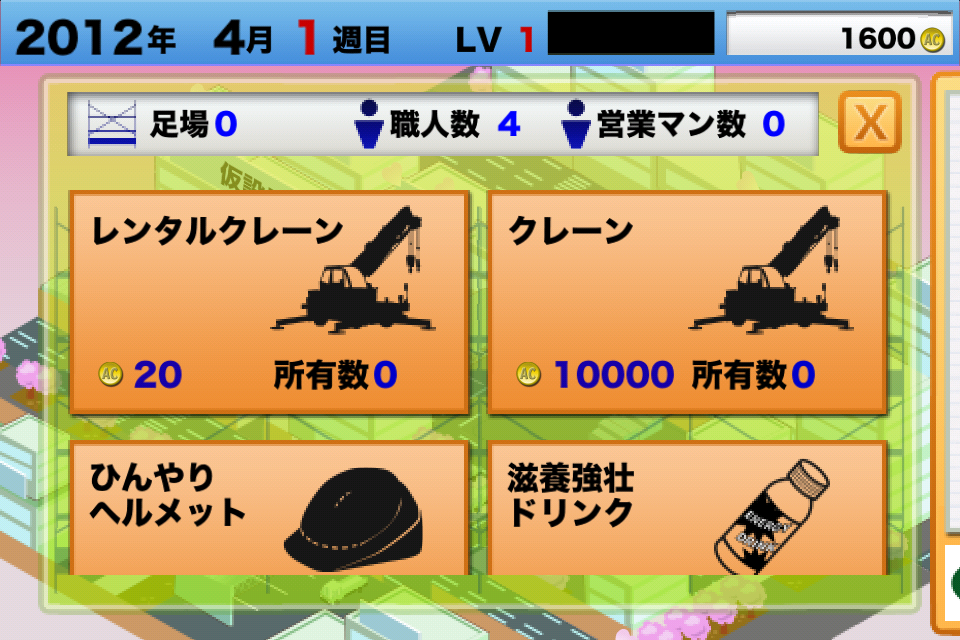
Then you go to the Shop page, where you buy things such as piping, energy drinks, cooling pads, and most importantly, cranes. In this industry, owning a crane is a big deal, so when you start the game, you only have enough money to rent one, with one of the eventual goals being to buy one.
Game On
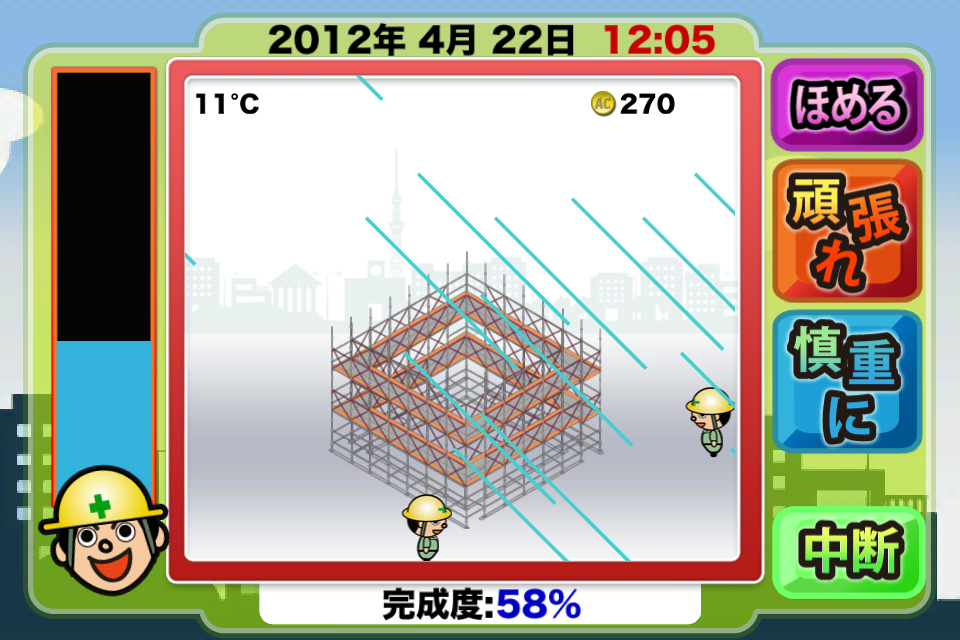
Now comes the main course, which is the building of the actual scaffolding. The goal is to complete it within a day of in-game time. Your crew comes out and starts building, and you need to keep an eye on the clock (at the top) and your crew’s stress meter (on the left) while using the buttons on the right to control things. They are, from top to bottom:
- Praise — Reduces the stress meter.
- Speed Up — Makes the crew work faster, but raises the stress meter.
- Slow Down — Slows the pace of the work but helps reduce the stress meter.
- Postpone — The panic button.
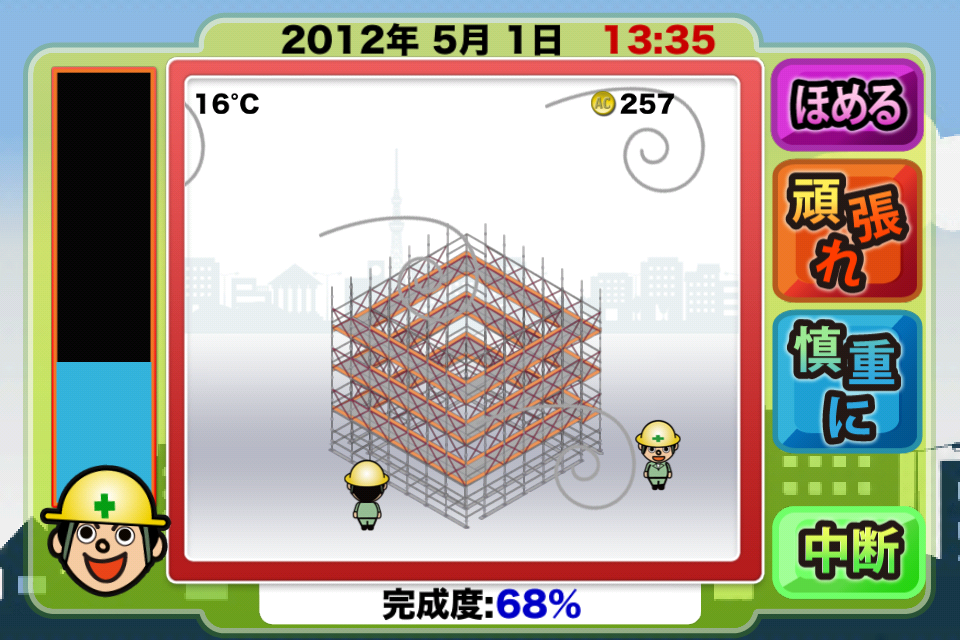
And the panic button is one you’ll use, as the scaffolding biz can be a dangerous one. In addition to elements such as rain and wind, if your crew gets too stressed, the player is treated to an invisible roulette of accidents, some of which include:
- Breaking of tools
- Crew member catches the flu
- Crew member gets heat stroke
- Partial collapse of scaffolding
- Full collapse of scaffolding
- One person injured by collapse of scaffolding
- Multiple people injured by collapse of scaffolding
- One person injured by falling from scaffolding
- Multiple people injured by falling from scaffolding
And the list goes on. There’s even a dice roll for things like getting your helmets and drills stolen, which apparently happens from time to time, even in the usually civilized and safe country of Japan.
All In a Day’s Work

When the gig is done, you get a results screen, and each of your crew members gains XP and levels up, which allows you to access bigger and better jobs. The end goal is to clear 100 jobs within the year, starting with small houses and working your way up to skyscrapers.
Dust in the Wind
I really wish this game was still available to play. This project was a complete pleasure to make, the folks at ACCESS were super cool, and I got to learn about an industry I never even thought about before. If they ever want to make another game, I’d definitely be up for it. I’ve got this idea where you can use scaffolding to conquer the world…
